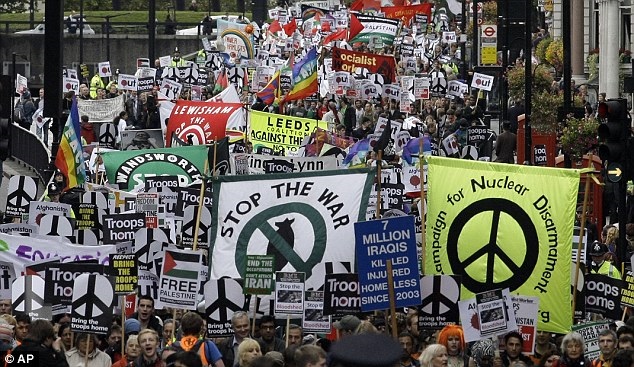
Source: Foreign Policy in Focus
As ISIS loses territory, it returns to mass-casualty attacks against civilians. That’s why military-first approaches to terrorism are doomed to failure.
At least 41 people were killed in the recent bombing of Istanbul’s Ataturk Airport.
The day before, suicide bombers killed five people in Qaa, a small village in Lebanon. And while the Saudi-led and U.S.-backed war in Yemen continues to rage, an ISIS affiliate claimed responsibility for attacks in the Yemeni port city of Mukalla that killed at least 12.
As of June 29, ISIS affiliates had claimed responsibility only for the Yemen attacks. But just a few hours after the Istanbul airport attack, Turkish authorities were already blaming ISIS. Since Ankara (unlike the U.S., where many officials blame ISIS for every act of violence) has been eager to blame every attack against Turkish targets on its Kurdish opponents — especially the Kurdish Workers Party, or PKK — the government’s early willingness to blame ISIS implies the likely existence of some convincing evidence.
Importantly, all three attacks took place following a significant defeat of ISIS on the ground.
The Iraqi military, backed by U.S. forces, had been moving against the extremist forces in the symbolically and politically important city of Fallujah since early February, when it imposed a full siege on the city. The closure, which denied civilian residents access to food, medicine, and other life-saving supplies, devastated living conditions for the ordinary Iraqis caught between ISIS brutality and the extreme deprivation caused by the siege. On June 26 — just days before the bombings in Istanbul, Lebanon, and Yemen — Baghdad proclaimed the city “liberated” from ISIS. Two days later, the Istanbul airport was attacked.
The timing was similar to other terrorist attacks that occurred as ISIS was losing ground. In the fall of 2015, the U.S.-led coalition, including many European countries, escalated its bombing attacks on the ISIS-held city of Ramadi. As ISIS faced the likely loss of the Iraqi town, it pivoted away from its emphasis on holding territory to return to its earlier focus on terror attacks against civilians. The Paris bombing — apparently carried out by ISIS-affiliated terrorists — shook the world on November 13. Two weeks later, on December 2, a California couple allegedly inspired by ISIS carried out the mass shooting in San Bernardino that killed 14 people and injured 22 more.
On December 28, the Iraqi military would declare Ramadi “liberated” from ISIS. (This celebratory announcement didn’t mention the inconvenient fact that U.S. bombing had largely pulverized what was left of the town. The 350,000 residents who’d fled ISIS brutality had no city to return to.)
The correlation between ISIS losing territory in its so-called “caliphate” in Syria and Iraq and the rise of terror attacks often much farther afield is one more indication of the failure of the U.S. “war on terror.”
Once again, it demonstrates the futility of attempting to bomb or shoot terrorism out of existence. When bombing and shooting are the methods of choice the targets are not “terrorism,” but cities and people. Air strikes and drone attacks — on people in a car, in the desert, in a hospital, or at a wedding party — may sometimes kill individual terrorists (and always other people), but do nothing to stop terrorism. Leaders are soon replaced, and the most adept bomb-makers soon turn out to have trained a successor.
Military engagement may have worked in some areas to oust ISIS forces from territory they controlled, but the cost of such campaigns is extraordinarily high for the people and nations where they occur. People face, as in Ramadi, the absolute destruction of their homes and city. They may become refugees or internally displaced people for a generation or more. In Fallujah, thousands of desperate civilians fleeing the fighting in mid-June found that no preparations had been made to care for them — with clean water, food, shelter from the searing heat, and medical care all lacking.
A big problem Iraqi forces and their U.S. backers face is the lack of support from some residents for their “liberators.” In a recent poll in Mosul, the second-largest city in Iraq, a full 74 percent of Sunni residents said they didn’t want to be liberated by the Iraqi military. ISIS has held the city since June 2014.
This harkens back to the original reason ISIS became so powerful in Iraq. It’s not because ordinary Iraqis supported the group’s brutal, extremist definition of Islam, but because the sectarian Shi’a-dominated government in Baghdad — and the often even more brutal and sectarian Shi’a militias allied to that government — made ISIS appear a lesser evil. Of course not all Sunnis, or even a majority, turned to ISIS. But a not-insignificant number did, and some continue to accept the group, however reluctantly.
U.S.-led military campaigns “against terror” continue to set the stage for more terror attacks, and to create more terrorists, as anger turns to rage — and rage, for some, turns brutally violent. The military-first U.S. strategy is exacting a huge price — especially for the people in Syria, Iraq, Yemen, Libya, Afghanistan, and beyond — but also on us here at home, and on civilians throughout the world.
If we ‘re serious about ending terror attacks, there are a host of non-military approaches that hold far more promise than bomb-drone-kill. Diplomacy, humanitarian support, arms embargos, economic assistance, more diplomacy — we need to use them all instead of military action, not alongside it. Step one means acknowledging that the current strategy is failing.
